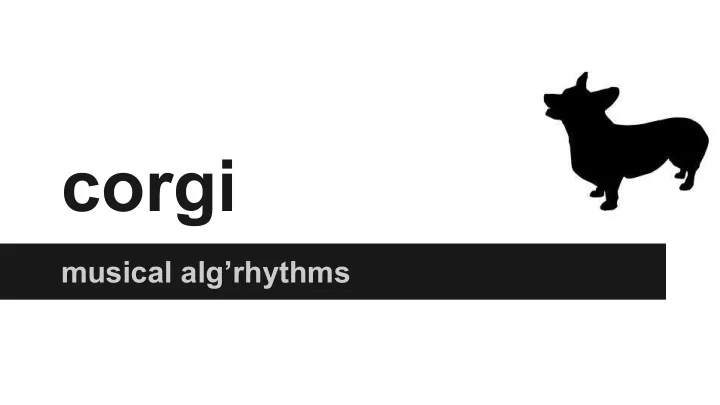

corgi musical alg’rhythms
The Team ● Philippe-Guillaume Losembe ● Alisha Sindhwani ● Justin Zhao ● Melissa O’Sullivan
Motivation ● Music is complex, but there are interesting patterns ● Patterns in notes and harmonies that can be analyzed ● Top-down and Bottom-up approaches ● Our goal was to develop a language to algorithmically generate music, and analyze these patterns in music.
Uses ● corgi’s main selling point is its ability to search through music. ● Data structures make it easy to identify and return the location of specific instances in a given composition ● Ability to programmatically generate music.
Hello World int main() { print("Hello, world!"); }
Types ● Fractions ● Durations ● Pitch ● Pitch/Duration Tuples ● Chords ● Track ● Composition
Flexible Data Type Conversion duration d; chord c; d = $1/2$; c = [(5,$1/4$), (3,d), (p,f)]; fraction f; f = $1/3$ pitch p; p = 5;
Structure
Java Implementation ● Use of the jFugue Library (not that great) ○ Limitations ● Translate well into Java class objects ● Added flexibility for greater abstraction
Lessons Learned ● Identify individual strengths earlier ● Start earlier, don’t procrastinate ● Do not underestimate how much time it takes to do even the small things ● Testing along the way is essential ● The more you distribute, the more you have to unify ● Be mindful of the limitations of the libraries that you use
Recommend
More recommend